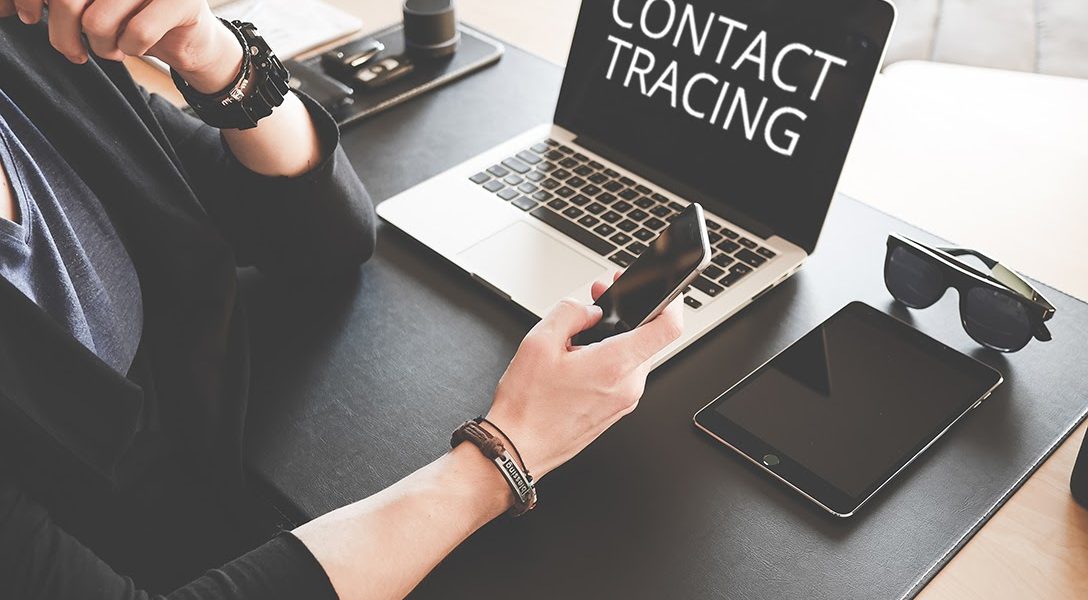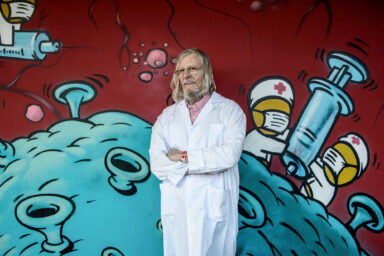Tell me whom you infected. Three months working as a COVID-19 contact tracer taught me lessons on how to tackle the virus. Bottom line: there is no magic bullet.
If you lived in Massachusetts the past three months you really did not want to get a phone call from me. My caller ID said “MA COVID TEAM.”
I worked as a case investigator in the first-in-the-nation statewide COVID-19 contact tracing program. Our initial cohort of 84 people quickly expanded into about 1,400 people making over 350,000 telephone calls to every person in the state who tested positive for COVID-19. And then to every person they’d been in contact with, which we defined as within six feet for more than 15 minutes.
Every call started with saying, I’m so sorry for what’s happened to you. How are you doing? Are you afraid? Let’s talk about what I can do to help you. And to help you protect the people around you.
Every call eventually got around to the big ask: Let’s talk about every person you might have exposed to the virus. We’ll call each of them. We won’t reveal your name. But we’ll tell them they’ve been exposed. And we’ll get them tested for the virus.
We’ll help you, and them, isolate and quarantine until you’re no longer infectious. We’ll do that because it is the best way to stop the virus from spreading
“Will you help me help you?” I’ve asked that hundreds of times since early April. Almost everyone agreed. A big “almost.” I’ll get to what happened with the people who refused to answer their phones (I persisted), or the people who asserted their constitutional right to go to the nearest bar (I developed a line for that), or those who claimed the virus was a hoax or “just another flu” (like a wandering Jehovah’s Witness, I sent them literature, then called back).
Successful isolation and quarantine ends a chain of infection. End enough chains and the virus spread ends.
I followed up after each initial call. Daily for people who tested positive for the virus. Every other day for people who’d possibly been exposed. Followed up to make sure they were still isolating themselves, to see if any new symptoms were developing, to see if they needed help with groceries or medications. Or just to talk. And to listen.
We found that these frequent follow-up calls were one of the keys to making contact tracing work.
The fundamental goal of contact tracing is to prevent already-infected people from infecting new people, who would then go on to infect others. This is done through isolation and quarantine. Isolation for people with the virus lasts 10 days from the initial symptoms and ends when they are fever free and have no respiratory symptoms. After these 10 days, they are no longer infectious and can be with other people.
People who were possibly exposed should be tested as soon as possible, and then be quarantined for 14 days. That is how long it can take for symptoms to develop following initial exposure. After 14 days, an exposed person will know whether she has the virus.
Successful isolation and quarantine end a chain of infection. End enough chains and the virus spread ends.
My fellow contact tracers included college professors, doctors, epidemiologists, lots of nurses, Rhodes scholars, repatriated Peace Corps volunteers, and a retired civil rights lawyer.
Contact tracing has been touted as the magic bullet against the spread of the virus. Massachusetts armed up early and heavily, starting with a $44 million investment in its fledgling contact tracing program. The state teamed its Department of Public Health with a long-established worldwide health nonprofit, Partners in Health (PIH), and Salesforce, a huge online marketing and sales software corporation. The state health department managed the data, Salesforce morphed its telephone sales software into a contact tracing program, and PIH hired and managed the staff, using its experience fighting Ebola in West Africa, cholera in Haiti, tuberculosis in Lesotho, and HIV in Rwanda, among others.
Dozens of states are boasting about plans to create contact tracing programs to employ tens of thousands of unemployed recent college graduates, child health workers, people doing Meals on Wheels, schoolteachers, and librarians. A bipartisan group of public health experts called on Congress to create a national army of 180,000 contact tracers. Contact tracing is boosted as a simple win-win: put people to work and defeat COVID-19, all by paying people to make phone calls. Everybody knows how to dial a phone, right?
As we learned in Massachusetts, though, it isn’t nearly that simple.
First, the right people have to be hired, lots and lots of the right people. Proposals that laid-off waiters, taxi drivers, factory workers, and sales clerks can be handed lists of phone numbers and be transformed into expert contact tracers overnight are as much wishful thinking as predictions that the virus will disappear when the weather gets warm and the sun shines through peoples’ skin.
It reached the point where I was sending people for testing who had no COVID-19 symptoms, only because they had been exposed to somebody else who had no COVID-19 symptoms but had tested positive for the virus. It was shocking how many of these doubly asymptomatic people came back with positive test results. But for the aggressive testing protocols they would have remained at large, and continued to spread their infection.
Massachusetts had 40,000 people apply for its first 1,000 contact tracer jobs. Selection was strict — so strict that it was statistically easier to get into Harvard than to get hired as a Massachusetts contact tracer.
My fellow contact tracers included college professors, doctors, epidemiologists, lots of nurses, Rhodes scholars, repatriated Peace Corps volunteers, and a retired civil rights lawyer.
Training was intense, constant, and ongoing. Even after three months into the job, half of my last day of work was still spent in training, preparing to be called back for the second wave. (We were paid $27.50 an hour, with a $2.50 hourly raise when promoted from tracer to case investigator.)
You can only trace a virus when you know who has it. That takes testing, massive testing. A state’s virus testing infrastructure has to be built out until tests are available, quickly and freely, to anybody who wants one. While portions of the country could not even test everybody with raging COVID-19 symptoms, Massachusetts worked to test anybody who asked for a test, symptoms or no symptoms.
It reached the point where I was sending people for testing who had no COVID-19 symptoms, only because they had been exposed to somebody else who had tested positive, even if that person had no symptoms. It was shocking how many of these doubly asymptomatic people came back with positive test results. But for the aggressive testing protocols, they would have remained at large, and continued to spread their infection.
Naming friends and co-workers knowing they will have to be quarantined for two weeks or more, maybe losing two weeks’ income, maybe losing their jobs, feels like ratting them out to the government. It’s a big ask to ask in a phone call.
After testing, positive test results have to be quickly compiled and sent to investigators. The key word is “quickly.” COVID-19’s course is rapid. A person is most contagious on the first day of symptoms, and by the time that first symptom appears he has been unknowingly contagious for two days. In the usual course, the virus clears within 10 days of first appearing in persons with mild to moderate symptoms. Waiting a week to get tested, then a week to get results, then a few more days for the test result to enter the database is next to useless in fighting the spread of the virus.
We were able to reach 90 percent of people who tested positive within 24 hours of their test result.
As soon as anybody in Massachusetts tests positive for the virus, identifying information goes into a Public Health Department database called MAVEN, the Massachusetts Virtual Epidemiologic Network. The computer at the desk in my bedroom is connected to MAVEN and to the CTC, the Massachusetts Community Tracing Collaborative. I have used the CTC’s software to call people from the MAVEN database eight hours a day, 40 hours a week, every week since April 9.
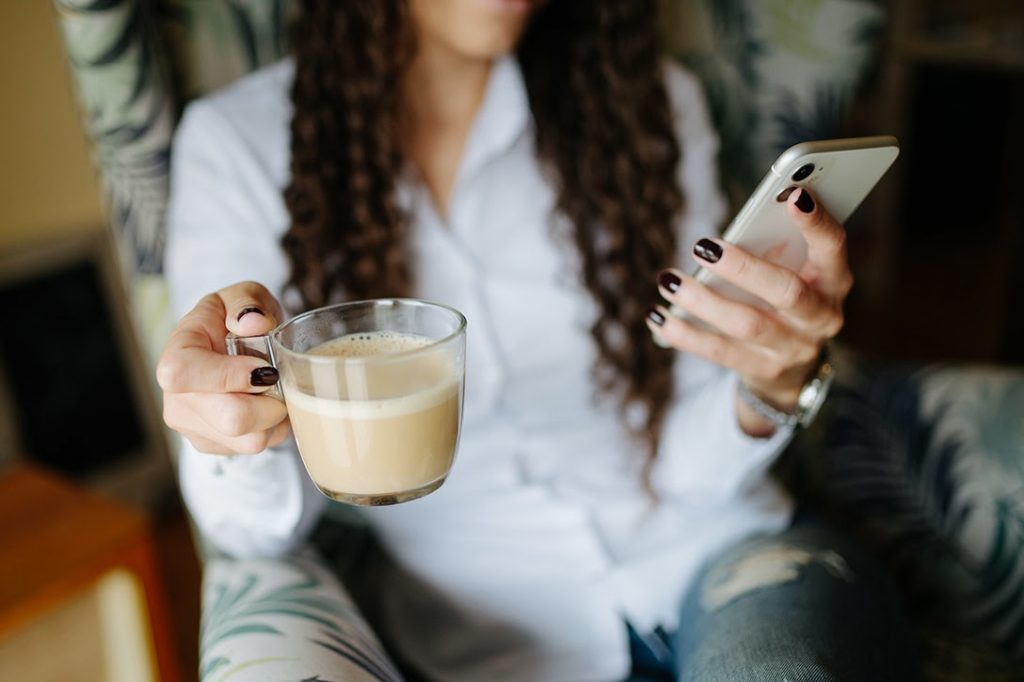
Of course, you have to be persistent. I had one person who’d tested positive answer the eleventh time I tried calling. One day I’d call and he’d pick up and hang up. I’d wait a few minutes, then call again. Something was up with this 68-year-old guy. I Googled him. Not only a Trump supporter, but a major Ronald Reagan fan.
When he finally answered my 11th attempt with a shout of “Why are you calling me?” I responded with Reagan’s nine most terrifying words in the English language: “I’m from the government, and I’m here to help.” Silence. Then laughter. We talked for the next two hours.
This man was an exception. Most people were anxious to protect themselves and even more so to protect their families. Many people just wanted somebody anonymous to talk with. To tell how terrified they were.
Listening to people tell the stories of their disease, details of their symptoms, speculation as to how they were infected, discussing how they could isolate themselves, was vital, but was not the main goal of my calls.
The hard part was getting a total stranger who had just answered a phone call from a total stranger to reveal names, addresses, phone numbers, and dates of birth of friends, family members, and co-workers who they might have infected. Infecting people you love with a possibly fatal disease is a horrible thing to do. Confessing to it is difficult, almost unnatural. Naming friends and co-workers knowing they will have to be quarantined for two weeks or more, maybe losing two weeks’ income, maybe losing their jobs, feels like ratting them out to the government. It’s a big ask to ask in a phone call.
I have a line I’ve used hundreds of times.
“COVID is evil,” I say to them. “It is spread by innocent people, people who don’t even know they are sick. It uses these innocent people to transfer this disease to the people they are closest to. Their family. Their children. Their parents. Their husbands and wives. Friends. People they work with. The people you most want to protect in the whole world.
“You were innocent when you were with these people.
“But still you might have spread the virus to them. I’ll help you protect these people. Let’s work together and do what we can. OK?”
I spoke with so many mothers who had the virus and were struggling not to infect their own children. Living for their 10-day isolation in a single bedroom, unable to hug their frightened children. I had a line for them, too:
“We hear so much about doctors and nurses and call them heroes. And of course they are. But there are other heroes. Who is more of a hero than a mother who will do anything to protect her children? Today is your opportunity to be a hero. Let’s come up with the plan that you will use to protect your children from this disease. Today you can be the hero.”
One man I worked with received his positive test result the day after Mother’s Day. I asked about people he’d been in contact with. He was silent for a minute. I waited. “Everybody,” he whispered.
We’d plan how meals would be cooked, how groceries would be provided, bathrooms cleaned, dishes washed, and most of all, how not to spread the virus from mother to child. Usually we came up with a plan that worked.
But not always. People who call COVID-19 a hoax, who say it’s just the flu, who say they are young and it’s just something to get through, these people need to talk with a 23-year-old mother of a five-month-old infant. First mom tested positive. Then I called with the news about dad’s positive test. I heard the baby crying in the background.
“How will we feed him?” mom asked me. “Who will change his diapers?” There was no solution. The grandmother lived upstairs. She often watched the baby. But she had the virus, too. The only solution was no solution. By the end of the week the baby tested positive.
It wasn’t only young children who kept me awake at night.
One man I worked with received his positive test result the day after Mother’s Day. I asked about people he’d been in contact with. He was silent for a minute. I waited. “Everybody,” he whispered.
His mother had insisted on seeing all her grandchildren on Mother’s Day. “I told her I was waiting for test results,” he said. But she’d insisted and he gave in. His brother and two sisters, their husbands, wives, and children were all at Grandmother’s house. A week later 10 of them had tested positive. The man who’d infected them was the first to clear isolation. His symptoms had cleared. His guilt remained.
They weren’t all tragedies, though. An 88-year-old woman living alone on the second floor of a brick triple-decker insisted I call her every day at noon. I was her company, she said. I was Honey. She was Sweetie. The hardest part for her was listening to her grandchildren running around on the third floor, where they lived with her daughter. Her symptoms were minor. She’d lost taste and smell but bragged that she’d been eating “onions like they were apples.” Why, I asked. Because I can, she replied. On her final day, when I called to release her from isolation, and to say goodbye, she was out of breath when she answered the phone.
“You’d don’t sound good, Sweetie, what’s going on.”
“I just walked 2 ½ miles,” she replied.
“Sweetie,” I said, “you know you’re not supposed to go outside yet.”
“I walked circles in my living room,” she said proudly.
I ended her isolation on the spot.
At first the prediction was that each positive case would create 10 possible contacts. We were hired and organized based on that assumption. One case investigator would make initial calls to people who tested positive (sometimes delivering that news), and get a list of those who had been exposed to that person. Then 10 contact tracers would contact the people on that list and direct them to get tested and to quarantine themselves. That assumption did not survive our first week.
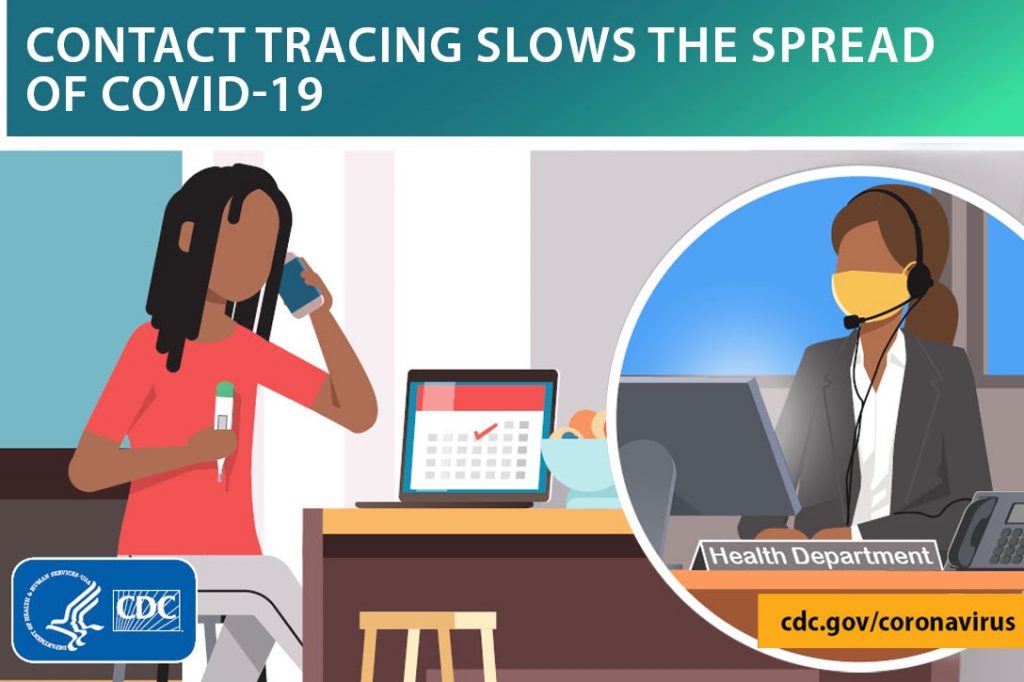
By early April, when we began, Massachusetts was pretty much in lockdown. Few masks were being worn, but there were no open restaurants, bars, “nonessential” businesses, or sporting events. Most contacts were casual, such as passing in the grocery aisle, and did not meet our 15 minutes within six feet standard. Most person-to-person contacts were at home, family members, roommates.
I entered them into the system as possible contacts, and spoke to them myself in the initial phone call. The contact tracers had few non-household contacts to trace. They were quickly cross-trained as case investigators and set loose on people who’d tested positive.
We were fortunate with contact tracing in Massachusetts. It will be a totally different — and far more difficult — task creating new contact tracing programs in states that have explosive growth rates for the virus and are wide open for businesses, churches, bars, and sports events. As of July 17, Texas had 14,916 new COVID-19 cases. With each of those persons circulating carelessly through society, the 10-contacts-per-case estimate is probably conservative.
Who is going to call more than 110,000 people per day, then call tomorrow’s new 110,000, plus follow up on today’s 110,000? And the cases from the day before? And the next day’s 110,000? Following up with each infected person every day for 10 days and each contact every other day for two weeks, all that effort, all those people dialing and dialing for eight hours a day, five days a week — we made calls from 8 AM to 8 PM, seven days a week, working in shifts — just is not possible. And even if it were somehow possible to call all these people, just calling them is not enough for a contact tracing program to succeed.
All of these people must be convinced to quarantine themselves. Some of them, however good their intentions may be, won’t be able to do that without help.
These tens of thousands of people huddling in their homes — many of them horribly sick and unable to care for themselves but not wanting to infect their families, even more tens of thousands at home in quarantine, waiting to see if their fever goes up, dreading every cough, testing themselves for the best indicator of oncoming COVID-19, loss of the senses of taste and smell — these people need groceries, medications, baby formula, dog food, diapers. And help in not losing their jobs. Money to pay their rent while they are missing two weeks work. They won’t be able to quarantine if they don’t have food.
The third leg of the Massachusetts program was the cadre of Community Resource Officers to whom we referred cases and contacts for social support. These CROs worked with local social service agencies — public, private, and ad hoc — doing shopping and other errands so that infected people could stay away from grocery stores, pharmacies, workplaces. It turned out that 20 percent of people we placed in isolation or quarantine needed help from a community resource officer to safely stay away from others. Without the social support we provided, one-fifth of people who were contagious with COVID-19 would have had to remain in circulation, spreading the virus.
We launched the Massachusetts contact tracing program in early April. “Launch” is a good term. Our analogy from day one was that we were building our airplane while it was in the air. Our initial band of 84 people, trained virtually — everything was virtual — working from our homes for a few days, then began dialing. A few hundred people were added every few days, and we trained the new arrivals, who then helped train the next cohort. I did shadow calls each day, case investigator calls to people who’d just tested positive, with handfuls of new tracers listening in (just to my side of the conversation, to protect the patients’ privacy). Our training continued, every day, on new call protocols, new features to our software, new insights into the virus.
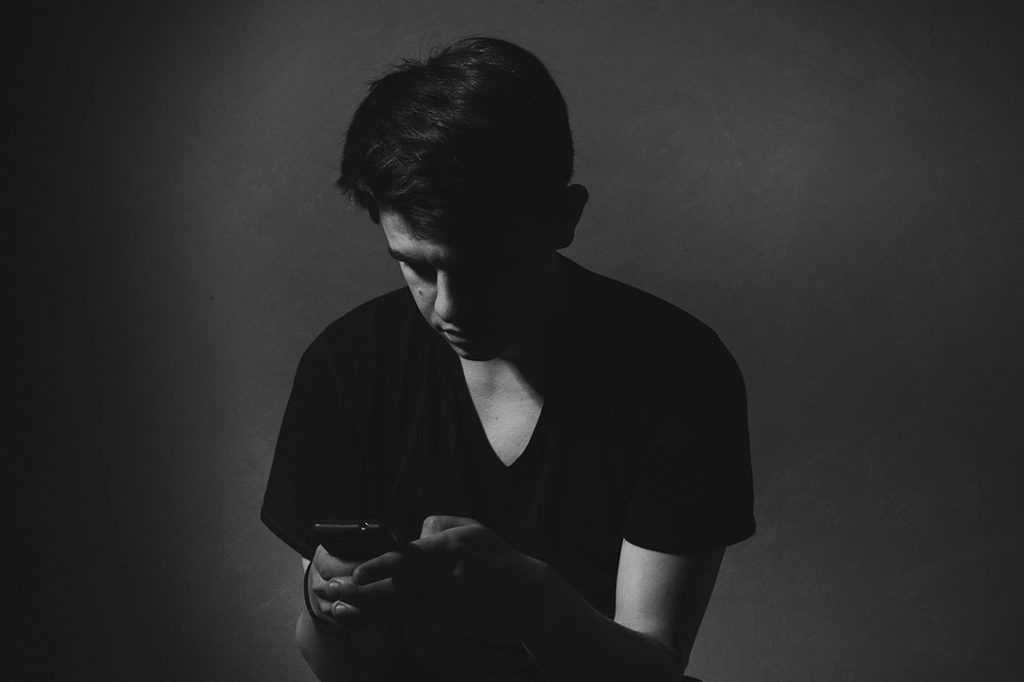
For the first weeks, my computer screen was crammed with thousands of names, case numbers, test dates. Screen after screen after screen. It was like shoveling water with a pitchfork. And each day, the more people we called, the more people who’d tested positive were added to our lists. Massachusetts joined New York and New Jersey as one of the nation’s COVID-19 hotspots.
It felt as if I could never scroll to the bottom of the screen, to the end of our “positive case” queue.
And then one day about six weeks in, about three in the afternoon, we reached the end of the queue, the bottom of the screen. There was nobody left to call that day. We pounded each other on the back. Virtually, of course; I’ve still never met my COVID colleagues in person.
After an hour or so the queue began repopulating. And the next morning it was full.
But soon, it became usual rather than unusual for us to work through the queue by midafternoon. And soon after that the queue would be empty some mornings, with new cases from MAVEN arriving later in the day, cases that would be snatched up by waiting case investigators.
Soon, we spent more of our time on followup calls than new calls. And training, constantly training. Speculating about the Second Wave.
It finally reached the point in mid-June when days would go by in which I would not make a single initial call to a newly diagnosed person. Massachusetts has 351 cities and towns. Each has a board of health. Among the jobs of a board of health is to follow persons with contagious diseases. The statewide contact tracing program was created because COVID-19 overwhelmed the local boards. By mid-June, the local boards could handle most of the new cases.
Massachusetts is different from the rest of the country because early on and in a major way the state created a comprehensive contact tracing program. Since early April we’ve identified every person who tested positive for the virus and spoke with and isolated nearly all of them. We discovered most of the persons they might have infected and quarantined and tested them. In theory, this effort, combined with general compliance with mask and social distancing requirements — plus slowly reopening the state’s economy only when justified by decreasing case numbers — drastically reduced virus spread.
The Perfect Storm: A Pandemic, Natural Disasters, and a Lack of Preparation
Now, at a time when the nation sets records for new infections nearly every dayn — when Texas, California, Florida, and Arizona set record after record after record of new cases — Massachusetts’s numbers are down, way down.
In April, Massachusetts hit a peak of 4,946 new cases in a day. At that time Texas had fewer than 100 daily cases.
On July 20, Texas reported 7,404 new COVID-19 cases. Florida, more than 10,000.
That same day, Massachusetts had 174 new cases.
Since mid-June, Massachusetts has had more contact tracers than contacts to trace. At the end of June an email went out seeking volunteers for a voluntary reduction in force in the contact tracing program. Two hundred of us accepted, including me. The next week involuntary layoff notices were sent. In 15 days the workforce went from 1,900 employees to 470.
After I left the program, I applied for unemployment benefits. Appropriately, I was granted benefits under the federal Pandemic Unemployment Assistance program for people who lost their jobs “as a direct result of COVID–19.”
Appropriate in that I got my job because of COVID-19, when there was too much of it. And appropriate in that I lost my job because of COVID-19, when there just isn’t enough of it to keep me working.
And that’s a good thing.
Harvey A. Schwartz is a retired Boston civil rights attorney. He has argued two civil rights cases before the US Supreme Court. His novel Never Again describes a frightening scenario in which something similar to the Nazi Holocaust happens in the near future in the US. In April, May, and June he worked as a case investigator in Massachusetts’s contact tracing program, the Community Tracing Collaborative. Opinions expressed in this article are those of Mr. Schwartz and not the CTC.
Related front page panorama photo credit: Adapted by WhoWhatWhy from CDC.
